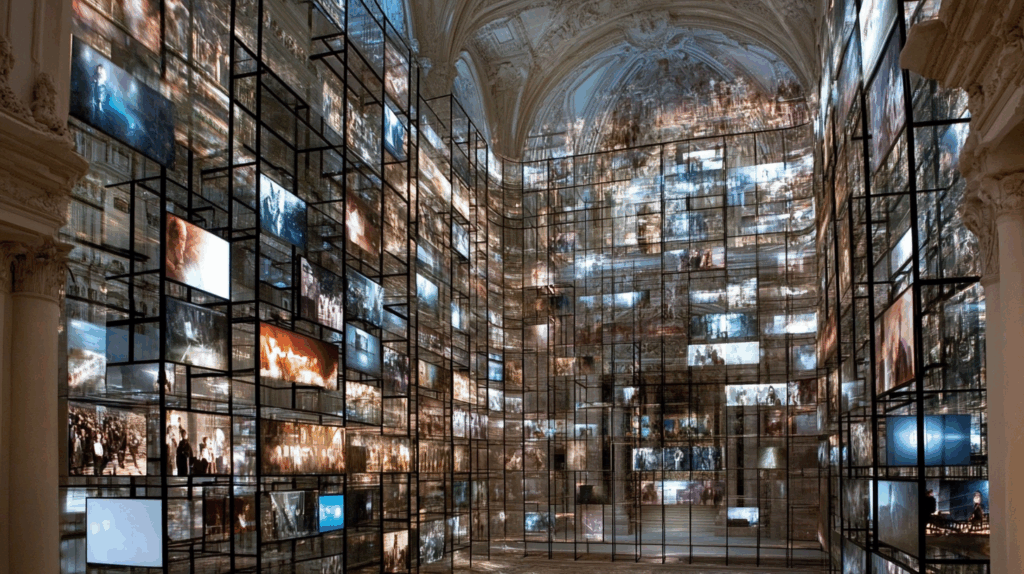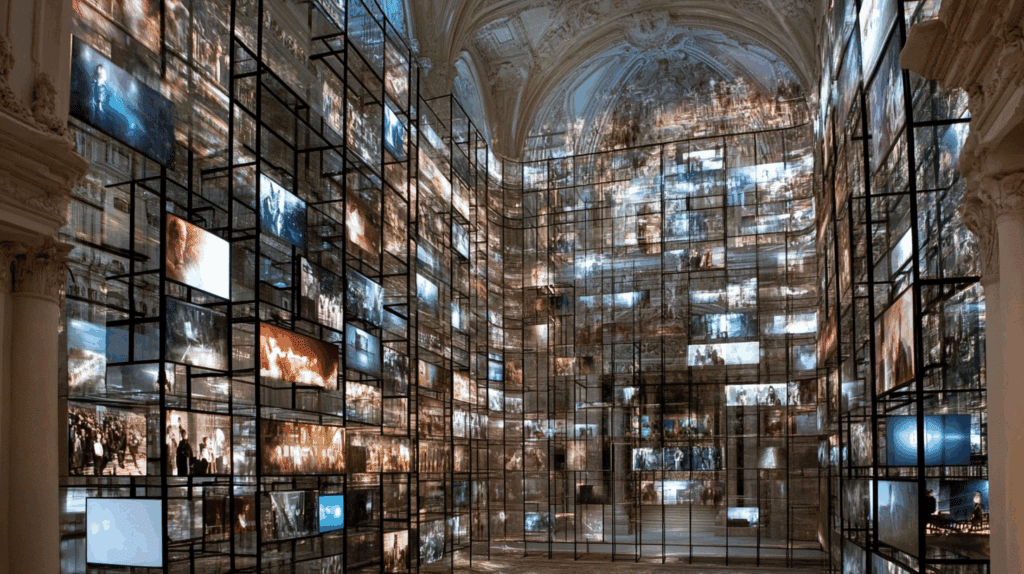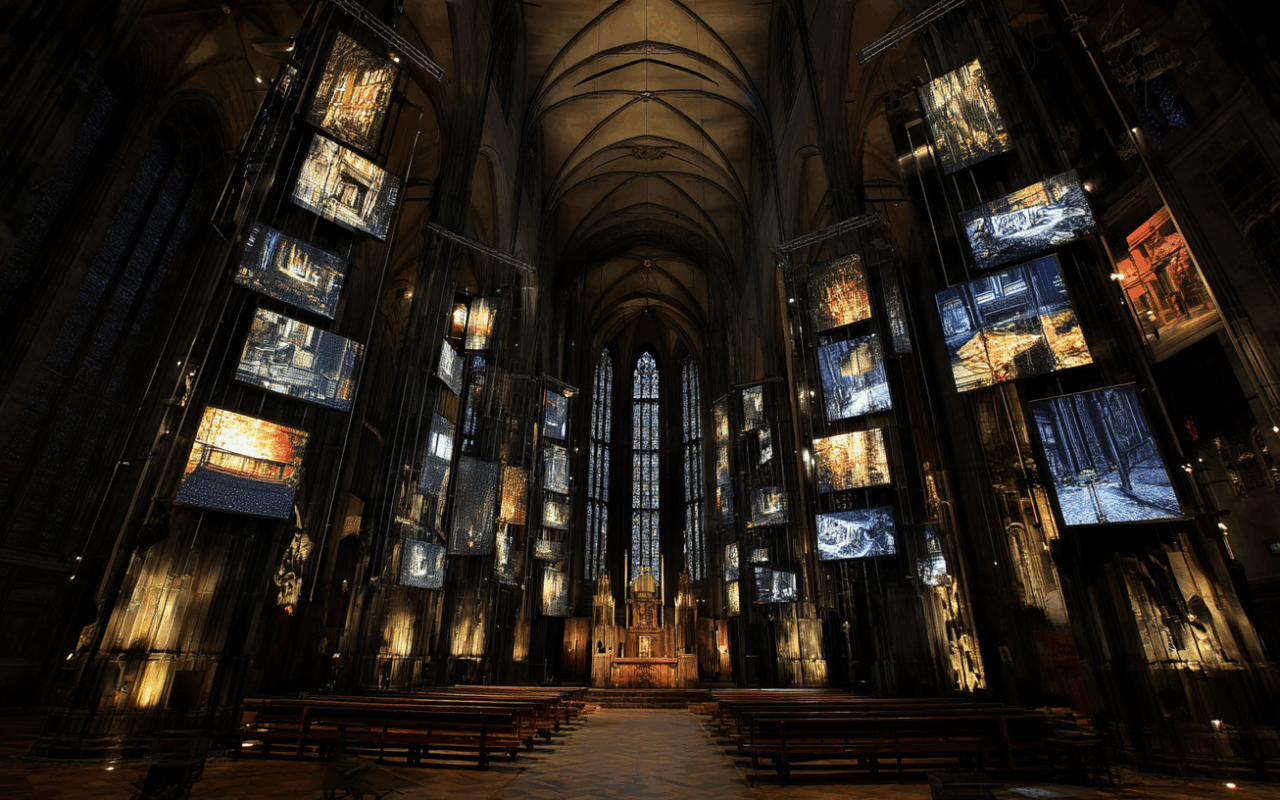Understanding Neoreaction (NRx): The Dark Enlightenment’s Growing Influence
In the landscape of contemporary political thought, few movements have generated as much intrigue and controversy as Neoreaction (NRx). Emerging from the darkest corners of the internet and gradually infiltrating mainstream discourse, this philosophical movement represents one of the most comprehensive rejections of modern liberal democracy. Here we’ll explore the origins, key figures, core beliefs, and growing influence of Neoreaction in both Silicon Valley and Republican politics.
Origins and Key Figures
Neoreaction emerged in the mid-to-late 2000s as an online philosophical and political movement, primarily through blog posts and forum discussions. The movement’s foundational texts were written by Curtis Yarvin (writing under the pseudonym Mencius Moldbug), a software engineer by day and political theorist by night who began publishing his critiques of modern democracy in 2007-2008 through his blog “Unqualified Reservations.”
Yarvin’s verbose, citation-heavy writing style attracted a small but dedicated following of readers who were drawn to his radical critique of contemporary political systems. His work was further developed and popularized by British philosopher Nick Land, who coined the term “Dark Enlightenment” in his 2012 essay of the same name. Land, formerly associated with the Cybernetic Culture Research Unit at Warwick University, added accelerationist elements to Neoreactionary thought, emphasizing the role of capitalism and technology in destabilizing existing political structures.
While Yarvin and Land are considered the primary architects of Neoreactionary thought, the movement draws inspiration from earlier thinkers. These include 19th-century writer Thomas Carlyle, who advocated for authoritarian governance; Julius Evola, an Italian traditionalist philosopher; and American economist Hans-Hermann Hoppe, known for his critiques of democracy from a libertarian perspective.
Core Beliefs
At its heart, Neoreaction represents a fundamental rejection of Enlightenment values and the modern liberal democratic order. Its adherents advocate for several interconnected beliefs:
Anti-Democratic and Anti-Egalitarian Stance: Neoreactionaries reject the concept of democracy, viewing it as an inefficient and ultimately harmful system of governance. They argue that democratic systems inevitably lead to social decay and that equality is neither possible nor desirable.
Rejection of Modernity: NRx thinkers see the progressive values of the Enlightenment as a destructive force that has undermined traditional hierarchies and social orders. They advocate for a return to pre-modern forms of governance and social organization.
Authoritarian Governance Models: Instead of democracy, Neoreactionaries propose various forms of authoritarian governance. These include absolute monarchy, “neo-cameralism” (Yarvin’s corporate model of government), and other hierarchical structures where power is concentrated rather than distributed.
Formalism: A key concept in Yarvin’s writing is “formalism,” which advocates for restructuring symbolic power to match actual power. In other words, those who hold de facto power in society should also hold formal, legal power, eliminating the perceived hypocrisy of democratic systems.
Race Realism and Human Biodiversity: Many Neoreactionary thinkers embrace concepts of so-called “race realism” and “human biodiversity,” arguing that human populations differ in significant ways due to evolutionary pressures and that these differences should inform social and political structures. Critics argue (rightfully) that these are simply variations on old debunked themes of white supremacy and phrenology by another name.
Accelerationism: Particularly in Land’s version of Neoreaction, there’s an emphasis on accelerating technological and capitalist development to hasten the collapse of existing political systems, making way for new forms of governance.
Key Concepts
Neoreactionaries have developed a specialized vocabulary to describe their worldview:
The Cathedral: Perhaps the most famous Neoreactionary concept, “the Cathedral” refers to the alleged alliance of academia, media, and bureaucracy that perpetuates progressive ideology. Yarvin describes this as a distributed conspiracy that maintains power not through explicit coordination but through shared beliefs and incentives.


GovCorp: Yarvin’s proposed model of government, where nations would be run like corporations with citizens as shareholders. The “CEO” would have absolute power but would be accountable to shareholders, creating what Yarvin considers a more efficient and honest power structure.
No Voice, Free Exit: A political framework emphasizing the ability to leave jurisdictions rather than participate democratically within them. Neoreactionaries argue that the freedom to exit (by moving to another governance system) is more important than having a voice within any particular system.
Influence in Silicon Valley
Neoreactionary ideas have found a receptive audience among certain segments of Silicon Valley‘s tech elite. The movement’s critique of democracy resonates with technocratic tendencies in the industry and appeals to those who see technological solutions as superior to political ones.
Peter Thiel, a co-founder of PayPal and prominent venture capitalist, has been linked to Neoreactionary thought, though he has not explicitly identified himself as a Neoreactionary. Thiel’s essay “The Education of a Libertarian” contains themes that align with NRx thinking, particularly in its skepticism of democracy and embrace of technological solutions to political problems.
The attraction to Neoreactionary ideas in tech circles stems partly from frustration with democratic processes that are seen as impeding innovation and progress. The movement’s emphasis on efficiency, hierarchical structures, and technological solutions appeals to a technocratic mindset that values optimization over democratic deliberation.
Impact on Republican Politics
Perhaps most significantly, Neoreactionary ideas have begun to influence mainstream conservative politics in the United States. Several figures associated with the Trump administration and broader Republican politics have demonstrated familiarity with or sympathy for Neoreactionary concepts:
Steve Bannon, former chief strategist to President Trump, has reportedly read and admired Yarvin’s work. While Bannon’s own ideology contains many elements distinct from Neoreaction, there are overlapping critiques of globalism and liberal institutions.
J.D. Vance, current Vice President, has cited Yarvin as an influence on his thinking. Before entering politics, Vance worked at Mithril Capital, a venture capital firm co-founded by Peter Thiel.
Michael Anton, who served in the Trump administration’s National Security Council, wrote the influential “Flight 93 Election” essay which, while not explicitly Neoreactionary, shares the movement’s apocalyptic view of liberal democracy and the need for dramatic intervention.
Curtis Yarvin himself has gained increased visibility in conservative circles, appearing on Tucker Carlson Today in 2021 and reportedly advising Republican candidates and officials behind the scenes.
Criticisms and Concerns
Critics from across the political spectrum have raised serious concerns about Neoreactionary thought:
Many observers describe Neoreaction as part of the alt-right or neo-fascist movements, noting its anti-democratic stance and emphasis on racial and hierarchical thinking. Academic analyses have drawn parallels between NRx ideas and earlier authoritarian ideologies.
The movement’s explicit rejection of democracy and equality represents a direct challenge to foundational values of liberal societies. As such, critics argue that the mainstreaming of these ideas poses a threat to democratic institutions and norms.
There are also concerns about the potential real-world consequences of Neoreactionary influence, particularly as these ideas gain traction among wealthy tech elites and political figures with actual power to reshape institutions.
Future Implications
The future influence of Neoreactionary thought remains uncertain but potentially significant:
As Neoreactionary ideas continue to infiltrate mainstream conservative discourse, there’s potential for these concepts to shape future Republican administrations and policies. The movement’s critique of democratic processes could inform efforts to reform or restrict democratic participation.
The ongoing debate about the role of NRx ideas in conservative thought will likely intensify as more political figures engage with these concepts, either explicitly or implicitly.
Researchers, journalists, and concerned citizens will need to continue monitoring the connections between Neoreactionary figures and those in positions of political and economic power, particularly as the movement’s ideas become more normalized in certain circles.
Takeaways
Neoreaction represents one of the most comprehensive intellectual challenges to liberal democracy in recent decades. What began as an obscure internet philosophy has gradually gained influence in both tech and political circles, raising important questions about the future of democratic governance.
While it remains a fringe movement in terms of explicit adherence, Neoreactionary ideas have demonstrated a surprising ability to infiltrate mainstream discourse and influence powerful figures. Understanding this movement—its origins, beliefs, and growing influence—is essential for anyone concerned with the future of democratic institutions and values in an increasingly uncertain political landscape.

Comments are closed.